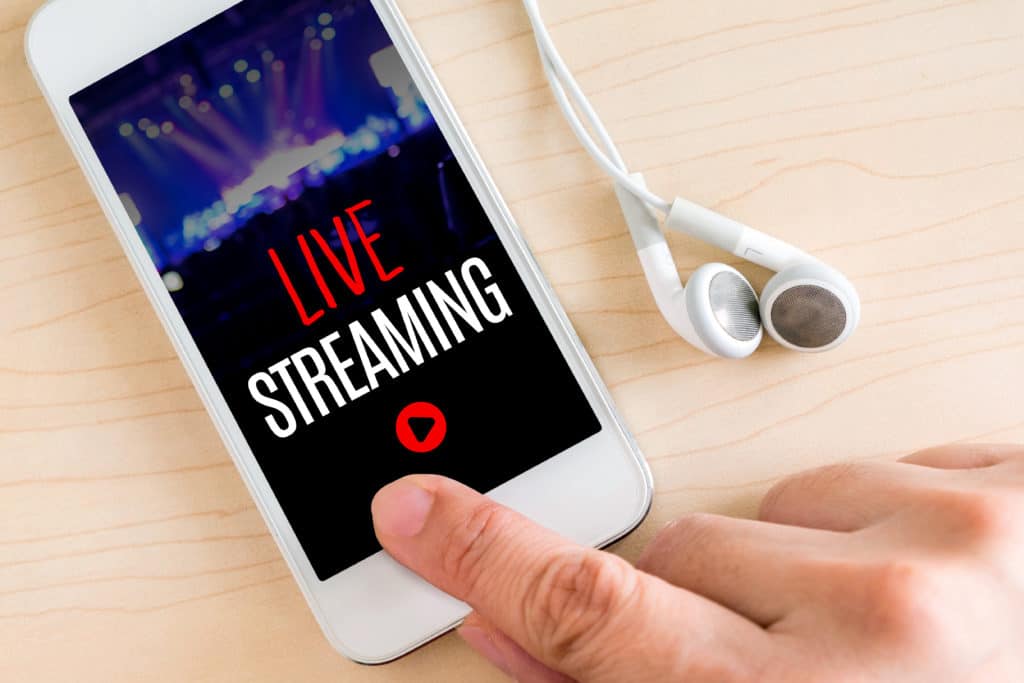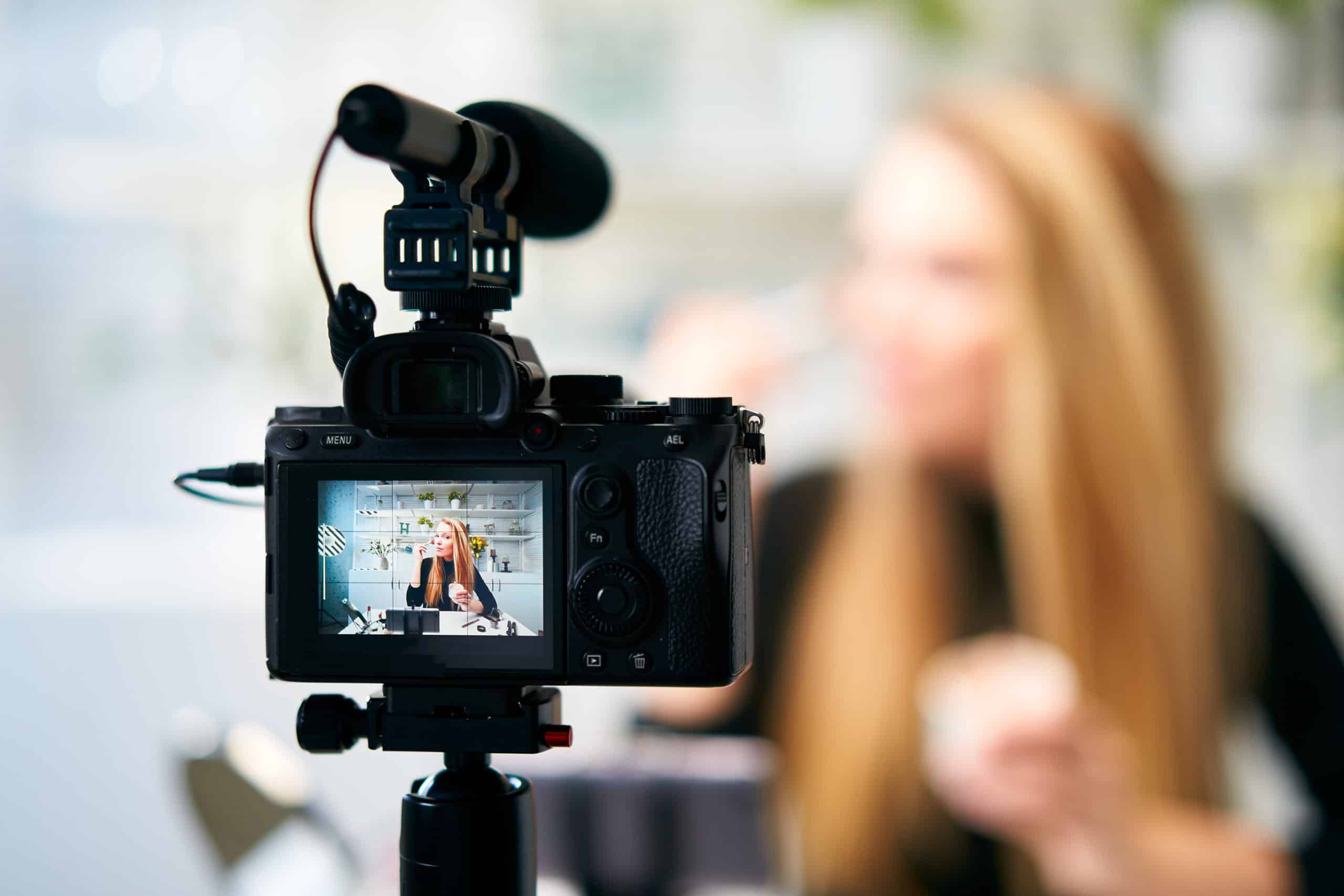Live stream shopping is being touted as the next big development in the B2C retail space.
Here’s how it works: Product reps, salespeople, or influencers go live either in their homes or in boutiques, explaining and discussing products with viewers. Viewers can then purchase the product from within the live streaming app.
Now, while this approach is blowing up in the B2C world, B2B tech companies haven’t been as enthusiastic about embracing live streaming, for selling or anything else—and in a way, that makes sense.
You may have noticed that B2B marketers tend to be fairly risk-averse when it comes to new marketing strategies. Often, they end up playing it too safe, and while that may mean they don’t ruffle any feathers, it can also mean that their brand ends up being fairly forgettable.
Although it’s become mainstream in the past few years, live streaming can still feel risky because of its very nature: it’s live. That’s a big adjustment for marketers, executives, and salespeople who are used to presenting a tightly controlled, highly polished image to their audiences.
However, live stream selling can be a hugely powerful tool for B2B tech companies. Here’s what you need to know to get started.
How is B2B live-stream selling different from B2C live-stream selling?
There are obviously some huge differences between selling for B2B and B2C.
For one thing, B2C sellers who are demoing a product like a facial toner, or a kitchen gadget, can reliably expect that during the live stream at least a few viewers will decide to purchase the product right then and there through the platform (Instagram and Facebook Live allow for this in-platform purchasing).
So for B2C, it’s really important to use a platform that allows viewers to purchase immediately within the same app. If they have to exit the live stream, visit a different website, and go through the checkout process there, it’s much less likely they’ll complete that purchase.

As a B2B tech company, your customers are not putting your products or services into a cart and checking out within a couple of minutes (unless you’ve figured out a magical way to get them to complete the entire B2B customer journey within a few minutes, in which case, tell us!).
For B2B live-stream selling, the focus is more on engaging with customers in ways that will get them to convert—at some point. Just like with regular B2B selling, it almost certainly won’t be immediate.
Live streaming has a significant advantage over regular video because viewers can engage with you in real-time. They can submit questions and comments, and you or a colleague can answer or respond right then and there. And that means you’ve got an additional chance to convince a customer to convert.
The platform still matters, but more in the sense that you need to be using the same one your audience is using so you can reach the right people.
How to choose the right platform
LinkedIn is typically an excellent choice for any B2B company, as you can be fairly certain the people you’re selling to are on LinkedIn. They may be on Facebook, Instagram, or Twitter, too—but LinkedIn is still the top social media platform for professionals.
In fact, according to LinkedIn’s own stats, a full four out of five LinkedIn users “drive business decisions”—so that’s your ideal audience right there.

In order to stream on LinkedIn, you’ll be using LinkedIn Live, the platform’s native streaming option. You do have to apply first—not everyone is allowed to stream on LinkedIn Live—so you’ll have to build in some time to go through that process.
Once your application is approved, you’ll need to choose a third-party streaming tool like Restream, SocialLive, or Switcher Studio to integrate with LinkedIn. Full step-by-step instructions can be found in LinkedIn’s Learning Center.
Facebook Live can also be a good place to start if you have a good-sized Facebook following. And if you’re a live-streaming newbie, Facebook does have the advantage of fewer hoops to jump through to get started—anyone can go live on the platform by simply navigating to the camera icon on the sidebar, and selecting “Go Live.”
What kind of content should you be streaming?
For B2B tech companies, there are a few types of content that live streaming is excellent for.
Remember that B2B live streaming is about:
- Nurturing your customer relationships
- Moving customers down the funnel
- Retaining customers you already have
- Persuading potential customers to convert
Some of the types of content that can accomplish one or more of these goals are:
- Interviews with your executive team. If your CEO, CIO, CMO, and/or other members of the executive team are comfortable being interviewed on camera, these sorts of live streams can attract a lot of engagement. These would typically fall under the category of thought leadership, so you’d want to approach it as a conversation with a knowledgeable expert, discussing trends in the industry, recent developments or changes to your brand’s product or service, larger global events that are impacting innovation, etc.
- Events. If you’re hosting an event that’s typically closed to those outside your industry, like a panel or conference, consider live streaming some or all of it (as long as no confidential information is being disclosed, of course).
- Product launches. Product launches are, in a way, the B2B version of those YouTube “unboxing” videos. Viewers love getting the first look at a new product—just think of Steve Jobs’ massively successful Apple product unveilings. For a live stream, you’ll want to walk viewers through your new product in-depth, like you would with a product demo video. However, during the live stream, you’ll also be able to respond to questions in real time, so it’s a good idea to have a colleague or teammate there with you to help sift through the questions and focus in on the ones you want to address more fully.
- Interviews with influencers in your industry. If you work closely with a B2B influencer—or even if you haven’t, but you want to start—identify one who speaks to your particular niche and invite them on to your live stream to be interviewed. This is a win-win, as both your brand and the influencer get exposure, as well as access to each other’s audiences.
- Discussions of a thorny or complex topic. If you or a colleague delivers keynote speeches or regularly speaks at events, then you’ve already got a few topics ready to dive into. Instead of treating it as a keynote, however, approach this as a more informal conversation. You may find yourself needing to stray from your script now and then in order to follow that conversation where it leads, and that’s fine. After all, being somewhat “unscripted” is the appeal of live streaming, anyway.
Some tips to remember when live streaming for B2B
- Stream with a supportive colleague. It’s best practice to have someone else watching the screen with you to handle the ongoing engagements. This way, you’re not constantly getting pulled away from your topic to respond to every question or comment that comes your way. Responsiveness is important, certainly, but trying to speak well while also mentally deciding which comments you should respond to live is a recipe for overwhelm.
- Advertise your live stream before it happens. You need to let your audience know when it will occur and how they can tune in. If this is one of your first live streams, you may want to put some budget behind your posts to make sure as many people as possible see it.
- Share widely after the stream is over. Your live stream doesn’t disappear once you end it. You can share it as a video afterward on your social channels, upload it to YouTube, and post it on your blog or website. Once you’ve got the video, you can repurpose it by cutting it into clips and developing different social media posts around each one, so you get the most mileage out of your hard work.
- Try different topics, formats, and styles. Live streaming as a medium works because it’s unpredictable, it’s immediate, and it’s versatile. If your audience is responding to your CEO interviews, keep them up—but don’t let that keep you from trying out product demos or event streaming. The more you open your brand up to your viewers, the more they’ll trust you, and trust, as any B2B brand knows, is the only way to keep customers coming back to you year after year.

Live stream selling for B2B takes some time to get comfortable with, but if you give yourself the freedom to experiment a bit and see what your customers respond to, it could become one of your most effective selling tools in 2021.
Need some guidance? Get in touch!







